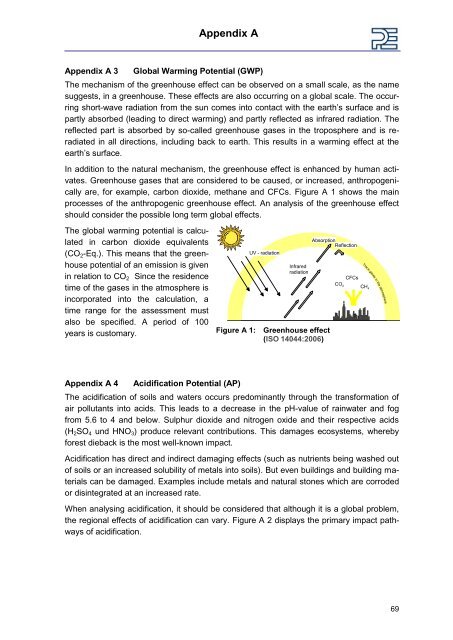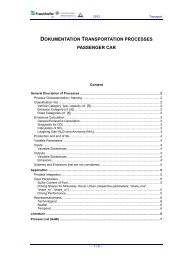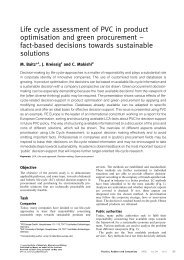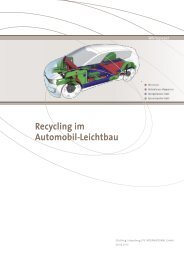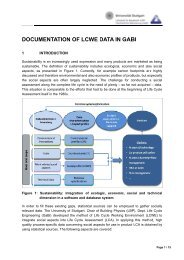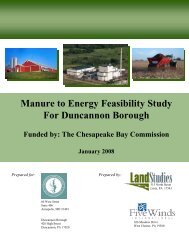GaBi Paper Clip Tutorial - GaBi Software
GaBi Paper Clip Tutorial - GaBi Software
GaBi Paper Clip Tutorial - GaBi Software
You also want an ePaper? Increase the reach of your titles
YUMPU automatically turns print PDFs into web optimized ePapers that Google loves.
Appendix A<br />
Appendix A 3 Global Warming Potential (GWP)<br />
The mechanism of the greenhouse effect can be observed on a small scale, as the name<br />
suggests, in a greenhouse. These effects are also occurring on a global scale. The occurring<br />
short-wave radiation from the sun comes into contact with the earth‟s surface and is<br />
partly absorbed (leading to direct warming) and partly reflected as infrared radiation. The<br />
reflected part is absorbed by so-called greenhouse gases in the troposphere and is reradiated<br />
in all directions, including back to earth. This results in a warming effect at the<br />
earth‟s surface.<br />
In addition to the natural mechanism, the greenhouse effect is enhanced by human activates.<br />
Greenhouse gases that are considered to be caused, or increased, anthropogenically<br />
are, for example, carbon dioxide, methane and CFCs. Figure A 1 shows the main<br />
processes of the anthropogenic greenhouse effect. An analysis of the greenhouse effect<br />
should consider the possible long term global effects.<br />
The global warming potential is calculated<br />
in carbon dioxide equivalents<br />
(CO2-Eq.). This means that the greenhouse<br />
potential of an emission is given<br />
in relation to CO2 Since the residence<br />
time of the gases in the atmosphere is<br />
incorporated into the calculation, a<br />
time range for the assessment must<br />
also be specified. A period of 100<br />
years is customary.<br />
Appendix A 4 Acidification Potential (AP)<br />
UV - radiation<br />
Infrared<br />
radiation<br />
Figure A 1: Greenhouse effect<br />
(ISO 14044:2006)<br />
Absorption Reflection<br />
CO 2 CH 4<br />
The acidification of soils and waters occurs predominantly through the transformation of<br />
air pollutants into acids. This leads to a decrease in the pH-value of rainwater and fog<br />
from 5.6 to 4 and below. Sulphur dioxide and nitrogen oxide and their respective acids<br />
(H2SO4 und HNO3) produce relevant contributions. This damages ecosystems, whereby<br />
forest dieback is the most well-known impact.<br />
Acidification has direct and indirect damaging effects (such as nutrients being washed out<br />
of soils or an increased solubility of metals into soils). But even buildings and building materials<br />
can be damaged. Examples include metals and natural stones which are corroded<br />
or disintegrated at an increased rate.<br />
When analysing acidification, it should be considered that although it is a global problem,<br />
the regional effects of acidification can vary. Figure A 2 displays the primary impact pathways<br />
of acidification.<br />
CFCs<br />
Trace gases in the atmosphere<br />
69


